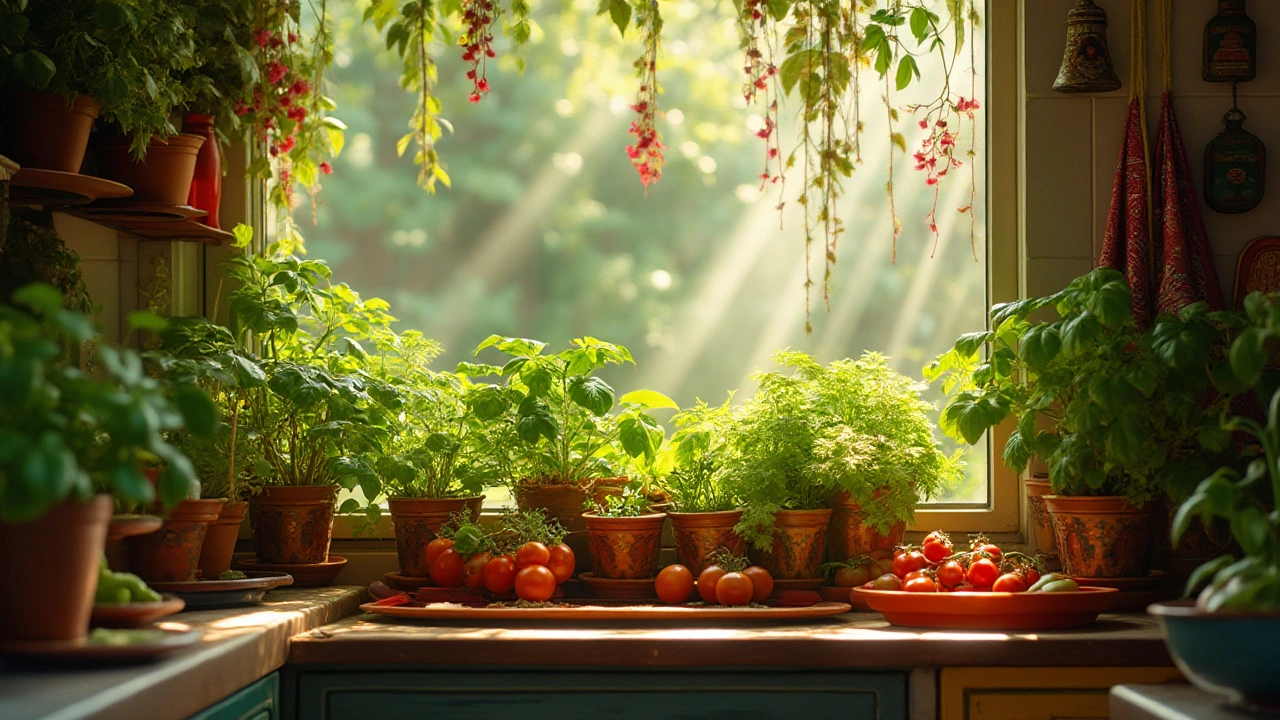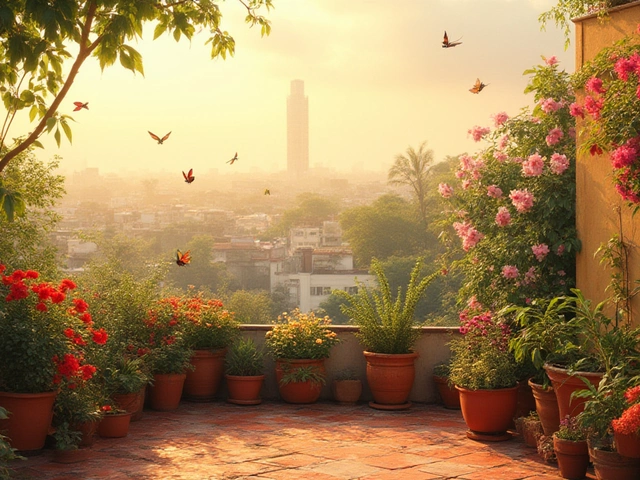If you've ever wanted to pick fresh vegetables without stepping outside, kitchen gardening offers the perfect solution. With a bit of preparation, knowledge, and some sunny windowsill space, you can turn your kitchen into a green oasis full of nutritious homegrown produce. Imagine the satisfaction of adding fresh basil to your pasta or vibrant cherry tomatoes to your salad, straight from your own indoor garden.
Starting your kitchen vegetable garden doesn't require a large outdoor yard or even a balcony. All it takes is choosing the right type of vegetables and creating the right conditions for growth within your home. By understanding your space and lighting, you can grow a variety of vegetables that thrive indoors.
- Choosing the Right Vegetables
- Creating the Perfect Growing Environment
- Space-Saving Solutions
- Maintenance and Harvesting Tips
Choosing the Right Vegetables
The first step in embarking on your kitchen garden journey is selecting the ideal vegetables to grow. Not all plants are suited to indoor environments, so picking wisely can make all the difference between success and disappointment. Leafy greens like lettuce, spinach, and kale are favorites among indoor vegetable growing enthusiasts for their ability to thrive in limited light and space. They mature quickly, can be harvested multiple times, and are incredibly versatile in a variety of dishes. Herbs, such as basil, cilantro, and mint, are also great choices due to their compact size and the burst of flavor they can add to your culinary creations.
Tomatoes, though requiring more light, can be a rewarding option if your kitchen has a sunny window. Opt for varieties like cherry tomatoes, which are smaller and well-suited to urban farming setups. Peppers are another sun-loving plant that can flourish indoors with plenty of light and warmth. A bit of research into the specific needs of each plant, like its light, water, and temperature requirements, will ensure you pick the best ones for your unique situation.
Don't hesitate to experiment with root vegetables, too. While they traditionally require more space, compact varieties of carrots and radishes can be grown in deeper pots. Remember to check the average mature size of each vegetable to understand how much room it will take up. International plant scientist Meike Klatte once stated,
"You can grow almost anything indoors if you're willing to modify your environment to suit the plant's needs."Let this be your guiding principle as you explore different options.
A helpful way to think about what to plant is by considering your own cooking habits. What vegetables do you find yourself purchasing regularly? By cultivating those you frequently use, you'll not only save on grocery costs but also gain the satisfaction of preparing meals with your own produce. Home gardening becomes more meaningful when you grow foods you genuinely enjoy eating. Start small, pick plants that match your confidence level, and gradually expand as you learn what works best in your kitchen environment. Witnessing seeds sprout into edible plants can transform a mundane kitchen corner into a thriving, productive nook.
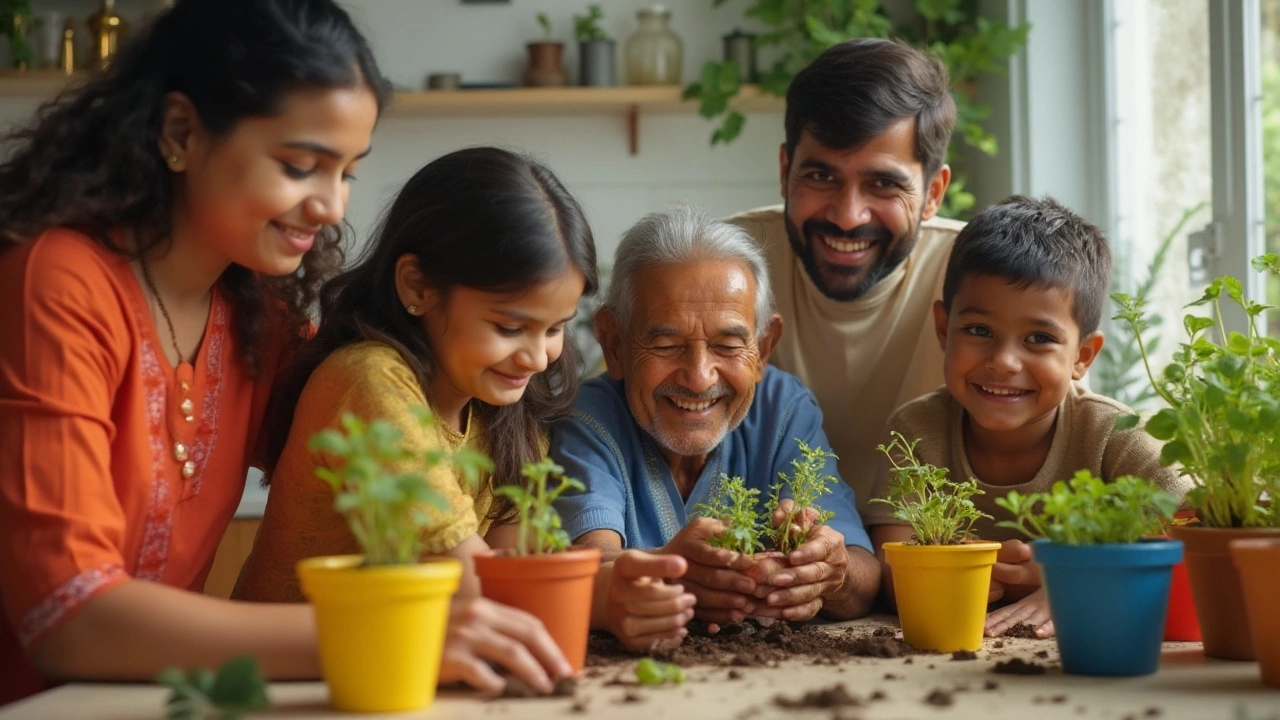
Creating the Perfect Growing Environment
When it comes to growing vegetables indoors, setting up the right environment is crucial for plant health and productivity. One of the key factors to consider is light. Most vegetables need plenty of sunlight to thrive, and a south-facing window often provides the best light conditions. However, if your kitchen doesn't receive enough natural light, don't worry. Artificial grow lights can do wonders for indoor plants. These lights are designed to mimic natural sunlight, ensuring your plants perform photosynthesis effectively and grow robust and healthy.
However, light is not the only factor to keep in mind. Proper temperature and humidity are equally important in your indoor vegetable growing adventure. Most vegetables prefer temperatures between 65 and 75 degrees Fahrenheit. Maintaining this range will help ensure steady growth. At the same time, humidity levels should ideally be around 40-60%. Kitchen environments can vary, and sometimes you'll need a small humidifier or a tray of water near your plants to achieve these optimal conditions. Keeping the environment stable is crucial to avoid stressing the plants.
Soil quality cannot be overlooked when setting up your kitchen garden. While outdoor gardens might rely heavily on garden soil, indoors it's best to use a quality potting mix that ensures good drainage and provides nutrients. Rich in organic matter, these mixes will sustain plant life better than regular soil. Add some compost to enhance the nutrient profile, further enriching your urban farming practices. This simple step will result in a vegetable bounty right in your kitchen.
Container choice is another element that plays a significant role in creating a suitable growing environment for your kitchen garden. Containers come in various sizes and materials, each offering unique benefits. It's essential to choose a container that provides ample space for root growth and has proper drainage holes to prevent waterlogging and root rot. Some people prefer clay pots due to their breathability, while others opt for lightweight plastic or fabric pots for ease of movement. Choose what suits your style and space the best.
Water and Nutrients
Proper watering and nutrient management are the lifeblood of any successful home gardening endeavor. Overwatering is one of the most common mistakes, as houseplants are more prone to root rot indoors than outdoors. It's best to have a watering schedule based on the plant type and the specific conditions of your kitchen. Remember, the topsoil should dry out between watering sessions to ensure that you're not drowning the plants. Incorporating a layer of gravel at the bottom of containers can help improve drainage further.
Nutrient supply, the final piece of the puzzle, can be managed by using organic fertilizers that work well with a kitchen garden. These fertilizers provide the essential nutrients that help plants to flourish. A balanced formula with nitrogen, phosphorus, and potassium is always a safe choice to keep your vegetables growing healthy and productive. "Growing vegetables indoors isn't just about light and water—it requires an ecosystem akin to what nature provides," notes gardening expert Mary L. Cairo in her book,
"Mastering Indoor Gardening."
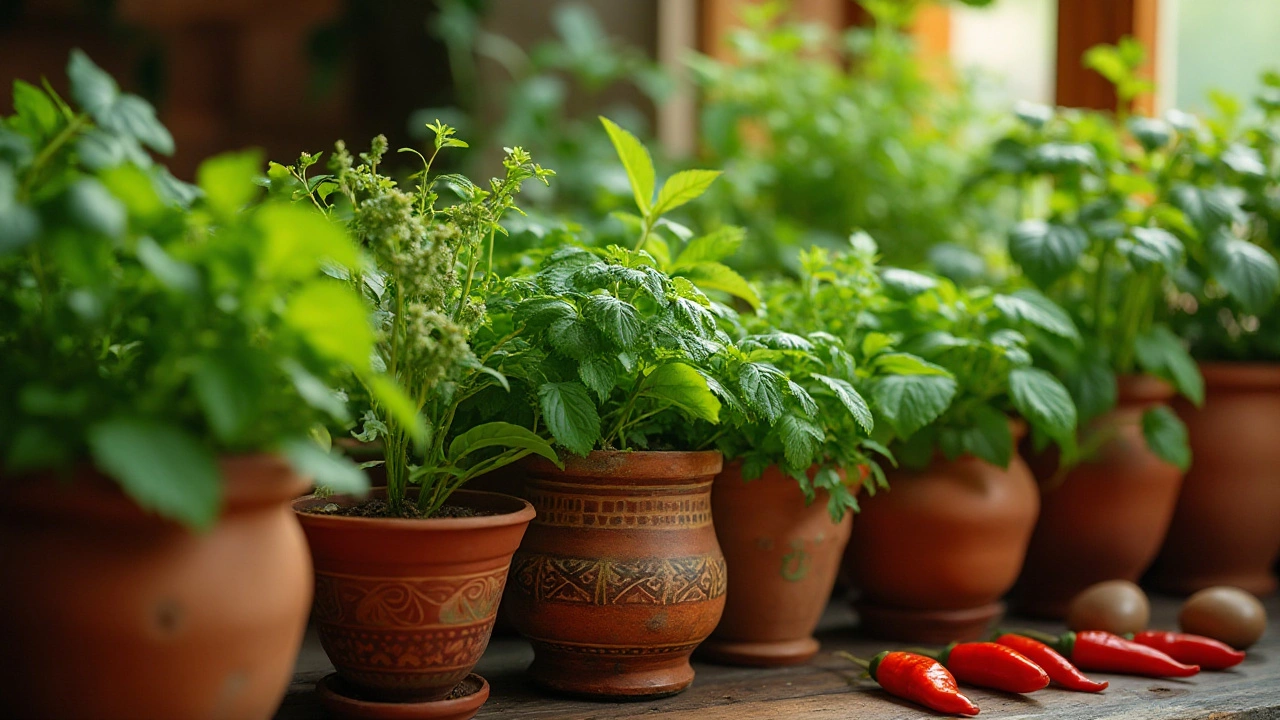
Space-Saving Solutions
Living in an urban environment often means dealing with limited space. For aspiring home gardeners, this can be a challenge when trying to incorporate a kitchen garden without taking over the entire house. However, with a bit of creativity and some clever space-saving strategies, you can maximize your indoor farming potential. One effective solution is the use of vertical space. Vertical gardening has gained popularity for a good reason—it allows for more plants in tighter areas. You can utilize wall-mounted planters or hang small pots to make the most of your walls. Shelving units provide another excellent way to grow plants vertically; stacking your indoor vegetable growing efforts upwards can help create a vibrant indoor garden while keeping your floor clear.
An option that's both space-efficient and aesthetically pleasing is the use of tiered plant stands. These stands vary in sizes and heights, allowing you to mix and match plants of different types and sun requirements. Placing sunnier plants on the top tier and shade-tolerant varieties below can create a diverse yet compact garden. A stackable system can also be beneficial for herbs and smaller home gardening projects. Additionally, consider planting in containers that can double as furniture or decor. A bench with a built-in planter or a table with a small herb garden centerpiece can serve multiple functions in your home.
Another key aspect of maximizing your gardening space is choosing the right plants. Selecting vegetables that grow upwards as opposed to outwards, like tomatoes or pole beans, can help conserve precious room. Using trellises can further aid in supporting climbing plants, offering a perfect harmony of function and beauty. When thinking about how to efficiently utilize space, don't overlook the option of hydroponic systems. These systems can be great indoors since they also cut down on the mess of soil.
As noted by urban farming expert William Hutt, "The secret to space-efficient gardening is really understanding your own living environment and maximizing every corner, ledge, or nook."
Remember to make thoughtful decisions about positioning plants to fully benefit from natural light. A south-facing window usually offers the best exposure, and rotating plants regularly can ensure even growth. Also, small, movable carts are a fantastic way to keep a highly versatile urban farming setup. They can easily be relocated to catch more sun or be tucked away when needed. In essence, embracing these space-saving solutions makes cultivating a vibrant, sustainable garden possible regardless of the constraints of city living.
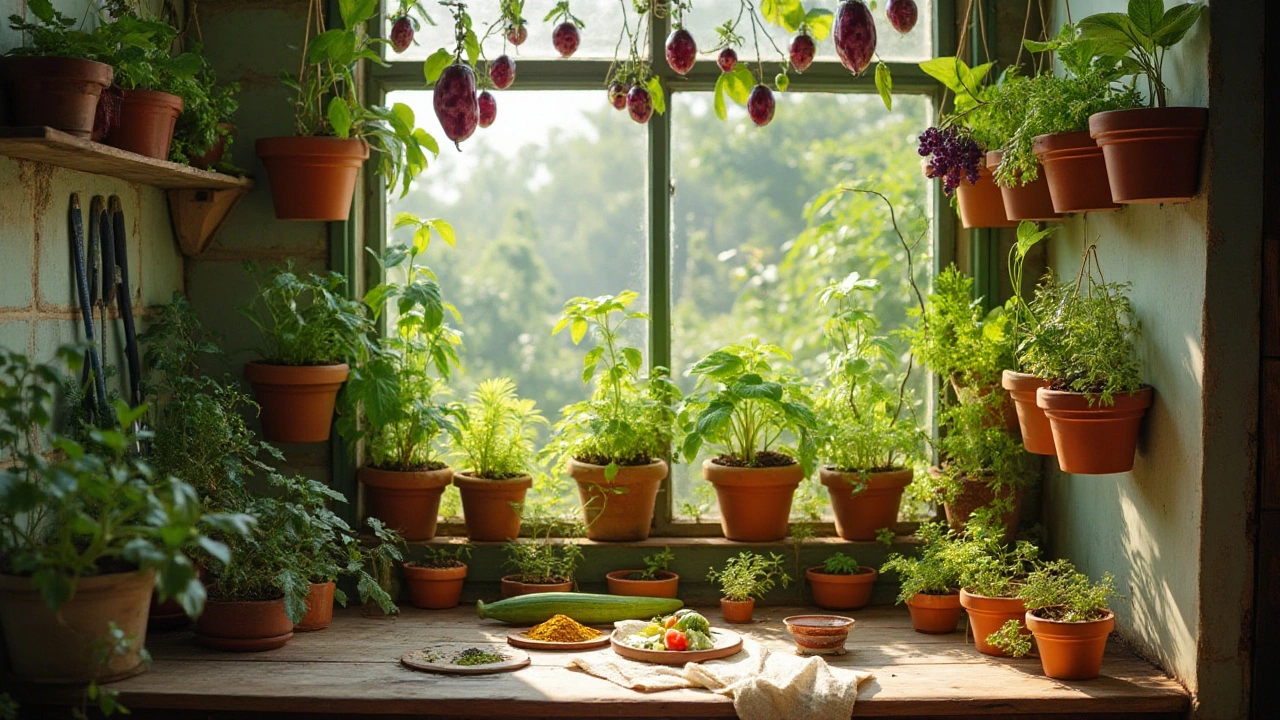
Maintenance and Harvesting Tips
Taking care of your indoor vegetable garden is key to ensuring a bountiful harvest. First, let's talk about watering. It's a fundamental aspect but can vary from plant to plant. Generally, indoor plants need less water than those grown outside. Check your soil by sticking your finger about an inch down. If it feels dry, it's time to give them a drink. But remember, soggy roots can lead to unnecessary trouble like root rot, so always ensure your pots have proper drainage. Keep a schedule, but most importantly, learn to read the cues your plants give.
Lighting is another crucial factor for thriving home gardening ventures. Vegetables like tomatoes need a good amount of sunlight. If your kitchen window doesn't provide enough natural light, consider investing in LED grow lights. These mimic sunlight and can be crucial for people located in urban settings where natural light may be scarce. Also, rotating your pots every week encourages even growth, which is particularly important for leafy greens. By varying the light exposure, you promote uniformity, aiding in healthier plants.
Temperature and humidity control are just as significant. Most vegetables prefer temperatures between 65°F and 75°F. Kitchens can sometimes fluctuate in temperature due to cooking, so it's wise to observe how this impacts your plants. Humidity trays, filled with water and placed under your plant pots, can help.In places where winters are harsh, make sure your plants are shielded from drafty windows or heat vents, as sudden changes can stress them out. Balance is key to creating a suitable microclimate for your indoor garden.
"Remember, a plant's well-being is intricately linked to its environment. Consistent maintenance nurtures consistent growth," suggests horticulturist Jane Riley.
When it comes to harvesting, timing is everything. For instance, herbs are most flavorful right before they flower. For leafy vegetables, picking outer leaves first allows the plant to continuously produce. Patience pays off; harvesting too early or too late can affect taste and yield. Regular pinching and trimming of dead leaves encourage new growth and minimize pests. Proper storage of your harvest also maintains its freshness; herbs can last longer in water like bouquet-style jars, while some vegetables like carrots prefer a cool, dry place.
